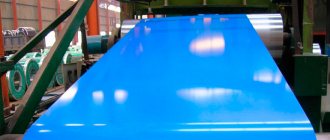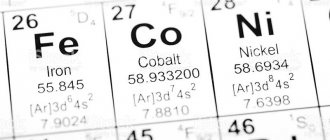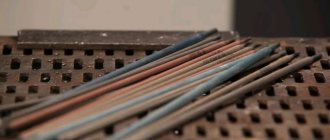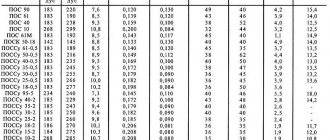Polymer coatings are used to protect metal parts from corrosion and give them a decorative appearance. A special type of polymer materials are anti-friction coatings, which not only prevent wear of parts, but also act as a lubricant.
Polymer coatings are intended for treating metal surfaces to protect against corrosion and give a decorative appearance.
The polymer coating can be polyester, polyvinylidene fluoride (PVDF), plastisol, pural, etc.
Let us consider these materials, their areas of application and application technologies in more detail.
Polyester
Polyester (polyester) is the most popular polymer used as a coating. It is characterized by high resistance to UV radiation, excellent anti-corrosion properties, and elasticity (easily moldable).
The polyester coating can withstand almost any temperature - both low and high.
Compared to other types of polymers, polyester is the most affordable.
The not very outstanding strength characteristics of the material are compensated by additional processing with quartz sand. However, the cost of applying the coating increases.
Transportation of products with a polyester-quartz protective layer presents certain difficulties, since sand can damage adjacent surfaces.
Properties: why does a concrete base need protection?
The popularity of concrete floors in private construction is explained by the ease of making it yourself, using a minimal set of tools. The mixture includes a binder (cement), filler (gravel of various formations, sand, stone chips), improving additives and water, which makes the material affordable. The owners make a choice in favor of a concrete coating, taking into account other advantages of the material:
- Reliability, mechanical strength and long service life.
- Resistance to aggressive environments.
- Fire safety.
- Easy care.
However, the concrete surface begins to lose homogeneity over time, which is associated with two processes:
- Changes in temperature and humidity reduce the strength of the top layer, microcracks form on it, and then potholes appear.
- The porosity of the material, the release of salts to the surface, as well as its low tensile strength lead to the fact that under load the top layer begins to peel off. That's why the concrete floor gets dusty.
The garage floor is subjected to serious stress Source pinimg.com
The appearance of dust is a ubiquitous phenomenon, but most often it becomes obvious to the owner only after the floor has begun to be used. This situation is unacceptable not only for production, but also for a home garage or workshop.
To get rid of dust, special coatings for concrete floors are used. It is best to prevent the problem at the construction stage: after the concrete mixture has hardened, treat the surface with paint or another composition. As a result of the treatment, the pores on the surface will be clogged, and the wear resistance of the coating will improve.
In practice, several methods are used to protect concrete surfaces using different materials and technologies. Their diversity is enough to choose the most appropriate and effective option for specific conditions.
PVDF coating
Polyvinylidene fluoride (PVDF) is used to protect metals not much less frequently than polyester. This polymer consists of polyvinyl chloride (80%) and acrylic (20%).
PVDF forms a shiny, fade-resistant layer on parts, so it is often used as a decorative coating. This material can give the surface a gloss, metallic effect, copper or silver tint.
Polyvinylidene fluoride is resistant to mechanical stress and has the longest service life among all polymers. PVDF is used to treat metal surfaces that are exposed to aggressive environments.
The best liquid glass for car bodies
Liquid glass for cars made of nanoceramics, silicon dioxide or fluorine protects against UV rays and scratches. It is necessary to apply the solution with a melamine sponge onto the degreased surface of the paintwork. Within 1-3 hours the composition dries - a durable film with a hardness of 7H is formed.
Willson Body Glass Guard WS-01238
The durable film repels dirt and water, imparts a bright, rich shine and can withstand 40-50 contactless washes. The safe composition preserves the color of the paintwork and protects against microdamage.
The kit includes a product, a hardener, a pipette, a glove, an applicator, and two wipes for preliminary and final polishing.
Advantages:
- Easy application;
- Spectacular shine;
- Set;
- Color enhancement;
- Burnout protection.
Flaws:
- High price;
- Thin layer.
Buyers write that the layer is most suitable for polishing small places where the sun's rays and dust do not reach, for salon protection.
Soft99 H-7
A one-component product based on silicon compounds and solvents. It adheres well to the surface, protects against aggressive environmental influences: rain, snow, dirt, sea water and abrasive effects, and gives a magnificent caramel shine. On average, it lasts for a year, depending on the amount of reagents on the roads.
Before use, clean, degrease and dry the surface. The solution must be applied to a sponge, spread over the surface using horizontal and vertical movements. After 2-5 minutes, wipe the surface with a clean cloth to remove stains. The liquid sets within an hour, and complete polymerization occurs within a day. Professionals recommend avoiding high-pressure washers for a month after application.
When repairing polished body parts, they turn to specialists, since the layer is so strong that it is difficult to remove. The average consumption per machine is 30-50 ml, and the five-year shelf life allows it to be used 2-3 times on one machine.
Advantages:
- Rich caramel shine;
- Anti-rain and anti-dirt;
- Scratch protection;
- The effect of moisture on black.
Flaws:
- Difficult to apply;
- High price.
Suitable for processing paintwork, unpainted and transparent plastic, metal, chrome parts, glass. Do not apply to rubber elements, as this will lead to damage and poor quality results.
Crystal Coat Plus WAX 15900006
The spray with the new Double Crystal Coat formula is applied in two spray layers over an area of 20 cm². Before use, shake for 2-3 minutes, and then wipe the dried layer with a thin cloth from the kit.
The bottle contains 300 ml of solution, which is enough for 2-3 cars for 5 years. The manufacturer offers a shampoo and cleanser to remove fine scratches in addition to the coating. The cloth must be dry before polishing.
Advantages:
- Easy to apply;
- Low consumption;
- Low price;
- Water-repellent effect;
- Fine spray;
- Protection from dirt.
Flaws:
- Lint cloth included.
Users report excellent shine when applied to a damp car.
The best cars for large families
Plastisol
Plastisol, like PVDF coating, has excellent decorative properties. In terms of cost, it is the most expensive, but at the same time it has the best resistance to mechanical damage.
Plastisol is applied in a thick layer (up to 200 microns) and is used to create textured coatings, embossed surfaces and stamped designs.
This material perfectly protects parts from moisture and corrosion, but under the influence of very high temperatures (over +80 ° C) and direct UV radiation it can lose its properties. That is why it is not recommended to use it in southern latitudes (as a last resort, you can use light-colored plastisol with maximum reflective ability).
Safety precautions when performing floor installation work.
- General Safety Requirements (hereinafter referred to as Safety Requirements): 1.1. The work must be carried out by personnel trained to operate the equipment used and who have undergone safety training. 1.2. The equipment must be in good condition, have clear control labels, and meet electrical safety standards. 1.3. Work must be carried out under the supervision of a foreman or shift supervisor, in agreement with the foreman. 1.4 In addition to the recommendations given in this instruction, the organization and performance of work must comply with SNiP 12-04-2002 - “Labor safety in construction. Part 2. Construction production."
- Safety precautions when carrying out work on preparing the concrete base: 2.1. Preparing a concrete base using a shot blasting machine. 2.1.1. Before starting work, the worker is obliged to visually check the serviceability of components and assemblies, check the oil level, and add shot. 2.1.2. Operating a shot blasting machine without Personal Protective Equipment (hereinafter referred to as PPE) is prohibited. The PPE kit includes: - Goggles or plexiglass mask; — Robe complete with cap; - Gloves; — Headphones or earplugs. 2.2. Preparing a concrete base using a grinding and milling machine. 2.2.1. Before starting work, the worker is obliged to visually check the serviceability of components and assemblies, check the condition of the frankfurts (replaceable cutting tools), and replace worn ones. 2.2.2. Operating a grinding and milling machine without personal protective equipment is prohibited. The PPE kit includes: - Goggles or plexiglass mask; — Robe complete with cap; - Gloves; — Headphones or earplugs; - Respirator. 2.2.3. It is prohibited to operate the grinding and milling machine without connected suction (vacuum cleaner). 2.3. Preparing the concrete base with a milling machine and/or hand milling tools. 2.3.1. Before starting work, the worker is obliged to visually check the serviceability of components and assemblies, check the condition of the replaceable cutting tool, and replace the worn one. 2.3.2. Operating a grinding and milling machine without personal protective equipment is prohibited. The PPE kit includes: - Goggles or plexiglass mask; — Robe complete with cap; - Gloves; — Headphones or earplugs; - Respirator. 2.3.3. It is prohibited to operate a milling machine and/or a hand-held milling tool without connected suction (vacuum cleaner).
- Safety precautions when carrying out work on applying Praspan materials: 3.1. Work on applying KEMA without PPE is prohibited. The PPE kit includes: - Goggles or plexiglass mask; — Robe complete with cap; - Gloves; — Headphones or earplugs; — Headphones or earplugs; — A respirator that protects the worker from volatile organic and inorganic substances. 3.2. It is prohibited to carry out work on applying KEMA in conditions of insufficient ventilation. When carrying out work, it is recommended to ensure ventilation in enhanced mode. 3.3. KEMA materials . Avoid contact with skin. In case of contact with eyes, rinse with cold water and consult a doctor. 3.4. In a liquid state KEMA are flammable, therefore it is prohibited to store or open containers or carry out application work near an open flame.
Pural
Pural is made on the basis of polyurethane and modified polyamide. The pural coating has a silky-matte surface, high heat resistance and resistance to sudden temperature changes.
This material does not fade and is not destroyed under the influence of chemically aggressive environments. Pural is not as resistant to plastic deformation as plastisol, and is more expensive than polyester, but in terms of price-quality ratio it is the best option of all those presented above.
Pural coatings are most widespread in the production of roofing elements made of galvanized metal. Steel treated with pural acquires a beautiful appearance, high anti-corrosion characteristics and resistance to UV radiation.
Primers, impregnations, primers
Primer (primer) is a material that is used for preliminary preparation of the surface (if you are then going to apply the finishing coat). Primers are often (and erroneously) called impregnations, which, in fact, are independent impregnating sealing materials.
All these materials are not external, but penetrating; their main advantage is that they help to quickly and efficiently remove dust from the floor in the garage.
Concrete surface needs dust removal Source ad-cd.net
See also: Catalog of companies that specialize in finishing materials and related work
The basis of primers and impregnations are film-forming substances (polymers). The compositions may be natural or synthetic. After application, they penetrate into the pores of concrete and strengthen the loose structure, binding it with polymer molecules.
As a result, concrete practically stops dusting and becomes stronger. It better withstands negative temperatures and exposure to accidentally spilled acids and alkalis. To strengthen the concrete coating, the following types of impregnating materials are used:
- Polyurethane. Suitable for both primer and finishing layers, improve waterproofing and protect against abrasion. The floor is treated twice, undiluted. The best polymerization result is obtained at moderate temperatures (0-17°C) and humidity not lower than 70%. Polyurethane primer is often used to repair surfaces, for which it is mixed with sand.
- Water-dispersed. A budget option, made on a water basis, there is practically no smell. The main property is dust removal, the surface is slightly strengthened. Before application, water-dispersion mixtures are diluted with water.
Applying primer mixture Source opscool.ru
- Epoxy. The main property of epoxy primers is waterproofing. Like any epoxy resin-based materials, these are two-component formulations that must be mixed immediately before application and used at temperatures from +5°C.
Polymer antifriction coatings
A special type of polymer protective materials are antifriction solid lubricant coatings. Outwardly, they are similar to paints, but the pigment in their composition is replaced by highly dispersed particles of solid lubricants: molybdenum disulfide, graphite, polytetrafluoroethylene, etc.
Solid lubricants are evenly distributed in a polymer binder: epoxy, titanate, polyurethane, acrylic, phenolic and other resins.
The demand for antifriction solid lubricant coatings is due to their excellent performance characteristics: high load-bearing capacity, wide range of operating temperatures, extreme pressure and anti-corrosion properties.
Unlike conventional polymer coatings, antifriction coatings can withstand prolonged exposure to chemically aggressive environments and extreme loads. At the same time, they perform not only a protective, but also a lubricating function, which also benefits them from polymers.
An example of such materials is domestic MODENGY coatings. They are used in a wide variety of industrial and automotive applications.
Typical components for using coatings are medium and heavily loaded bearings, guides, gears, internal combustion engine parts (piston skirts, throttle valves, etc.), threaded connections and other friction pairs made of various materials (metals, rubbers, plastics).
MODENGY anti-friction solid lubricant coatings are applied once for the entire service life of the parts, which makes it possible to completely eliminate the need for oils and greases for further maintenance.
Application
Polymer coatings are used for a wide variety of materials - metal, concrete, glass, fabric, etc. Polymer coating has found wide application in such areas of industry as:
- construction and production of building materials;
- metalworking;
- textile industry;
- production of composite materials;
- furniture industry;
- petrochemical industry;
- shipbuilding;
- aircraft manufacturing;
- Automotive industry;
- electronics and electrical engineering.
Advantages and disadvantages of polymer coatings
Polymer coatings have both undeniable advantages and obvious disadvantages.
The advantages of polymers include:
- Aesthetics
- Impenetrability
- Relative heat resistance
- Electrical insulating properties
- Water resistance
- Environmental friendliness
- High adhesion
- Large selection of colors
However, along with the positive aspects, polymer coatings are not without disadvantages. The main one is the high cost of application, which consists of the cost of the polymer itself, auxiliary (priming) materials, special equipment, etc.
Another disadvantage of polymer coatings is the difficulty of removing them. They are quite resistant to chemicals, so the polymer layer cannot be removed with a solvent. The coating can only be removed using a special tool.
A significant disadvantage of polymers is the impossibility of applying them without special tools, which are available only to industrial enterprises or specialized specialists.
In addition, not all metals can be coated with polymer compositions, but only those that conduct electric current. This is due to a special method of applying polymers - by magnetic induction.
Work order
In accordance with the technology of polymer floors, before starting to create the final floor covering from polymer materials, it is necessary to determine:
- the quality of the foundation on which the new structure will be built;
- level of upcoming loads;
- the need to provide an anti-slip surface;
- features of coloring, the presence of a pattern or design.
Carrying out the work requires the preparation of a certain tool. A craftsman creating a floor covering from polymer materials will need a container in which the composition will be diluted. This can be a plastic trough or a deep bucket with a capacity of at least 25 liters.
Construction mixer
To mix the components efficiently, you need to prepare a drill with an attachment, the length of which is 5-10 cm greater than the depth of the container.
Several spatulas to distribute the composition over the entire surface and hard-to-reach places. A needle roller that can be used to remove air bubbles from the mixture applied to the subfloor.
To avoid disruptions during the work, it is necessary to calculate the amount of material in advance.
Try to distribute the mixture as quickly as possible.
To perform calculations, you will need to clarify the thickness of the coating and the density of the composition. With a layer thickness of 1 mm per 1 m², at least 1 liter of composition will be consumed. Calculating upcoming costs requires multiplying the resulting figure by the density indicated by the manufacturer on the packaging.
The technology for installing floors made of polymer materials is quite simple. First of all, you need to clear the room of furniture and remove the old flooring. The entire surface should be thoroughly cleaned of dust and other contaminants.
Now you can open and seal all detected cracks and cracks with mortar or foam. A layer of primer mixture is applied to a clean base. After it dries (after 3-5 hours), priming is repeated.
Applying a primer is a very important and responsible operation. A high-quality mixture provides excellent adhesion and significantly strengthens the base. Distribute the primer over the surface with a roller or wide paint brush. For more information on how to pour a polymer floor, watch this video:
In some cases, quartz sand can be added to the mixture used. This will create a slightly rough surface and guarantee high-quality adhesion of the coating to the concrete base.











